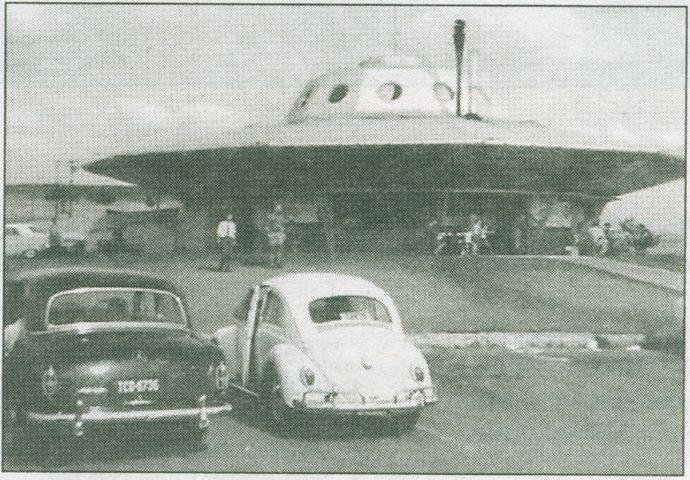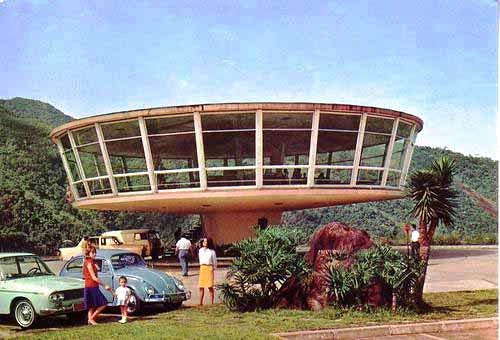Discover the Fascinating Flying Saucer Building in Brazil
Nestled in the mountains of Petropolis, Brazil, stands an iconic structure that sparks the imagination of anyone who sees it—the Flying Saucer Building. Officially known as the Restaurante Giro, this futuristic design has captivated architecture enthusiasts and curious visitors alike since its construction in the early 1960s. The striking, disc-shaped building resembles something straight out of a science fiction movie, yet it was intended to be a high-end restaurant, a symbol of mid-century modern design and optimism.
The Birth of a UFO-Inspired Restaurant

The Flying Saucer Building was designed by architect Oscar Niemeyer, known for his innovative and daring architectural creations. Built in 1956, the structure was part of a larger trend during the 1950s and 1960s when architects began exploring unconventional forms and futuristic designs. With its large, circular shape supported by a single central pillar, the restaurant quickly became a landmark in Petropolis, offering stunning views of the surrounding landscape. The building’s avant-garde design, along with its rotating floor, was intended to provide diners with a constantly changing panoramic view of the mountains.
The Decline and Abandonment
While the Flying Saucer Building was initially a hot spot for tourists and locals, its success was short-lived. By the late 1970s, the restaurant fell into disrepair and was ultimately abandoned. With its unique design, it became a subject of both fascination and neglect, as the structure suffered from a lack of maintenance. Over the years, the building’s once pristine exterior became weathered and deteriorated, a testament to the passage of time and the struggles of maintaining such an innovative piece of architecture. The site has also experienced vandalism and looting, which further contributed to its decline.
A Rare Glimpse into the Past

Despite its deterioration, the Flying Saucer Building remains a symbol of mid-century modern architecture, reflecting an era of futuristic optimism. Visitors who take the trip to Petropolis today can still view this abandoned architectural marvel, although its state of decay is a far cry from its once-glorious form. The contrasting images of the building from its prime to its present-day condition tell a powerful story of architectural ambition, dreams, and the harsh realities of time.
Why the Flying Saucer Building Matters
The Flying Saucer Building is more than just a curious relic; it is a representation of an era in architecture that pushed the boundaries of creativity. The bold and imaginative design of the structure, which resembles a flying saucer, embodies the space-age mentality of the time. At a time when the world was fascinated by space exploration, this building stood as a beacon of innovation. Even in its abandoned state, it continues to evoke awe and intrigue in anyone who comes across it. Its place in architectural history is secure, even as it slowly fades away.
The Future of the Flying Saucer Building

Despite its abandonment, the Flying Saucer Building remains a significant cultural and architectural landmark. There have been discussions about revitalizing the structure, but its deteriorating condition poses significant challenges. Nonetheless, the building still attracts photographers, architectural students, and tourists who are drawn to its unique design and fascinating history. Whether or not it can be restored to its former glory, the Flying Saucer Building will always hold a special place in the hearts of those who appreciate the daring creativity of its time.
Conclusion: A Timeless Icon of Innovation
The Flying Saucer Building in Petropolis remains one of the most recognizable architectural landmarks in Brazil, offering a glimpse into the past while inspiring curiosity about the future. Its blend of bold modernism, futuristic appeal, and tragic decline makes it a compelling subject for anyone interested in architecture and the passage of time. Despite its abandoned state, the Flying Saucer Building stands as a lasting symbol of mid-century modern design and innovation.